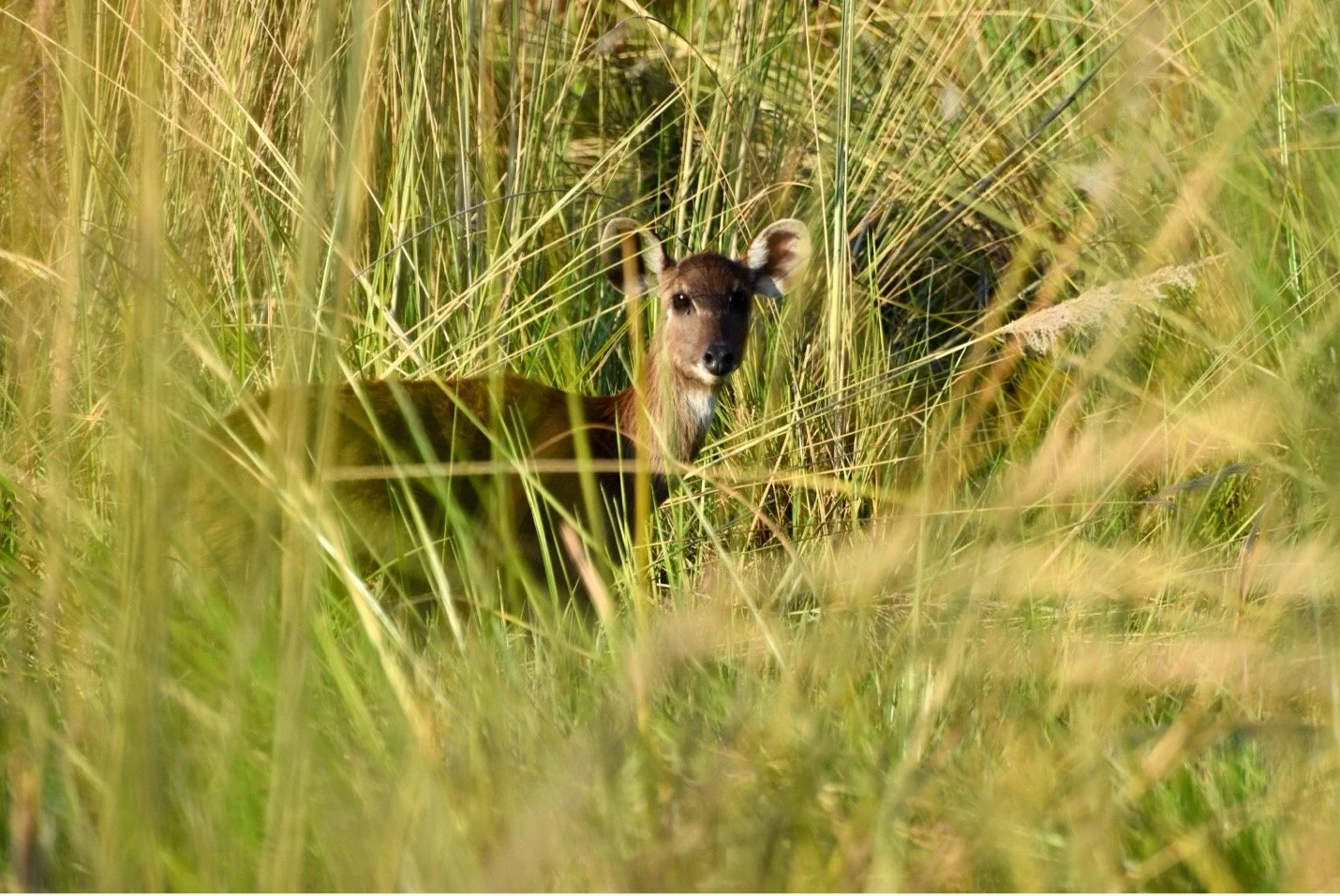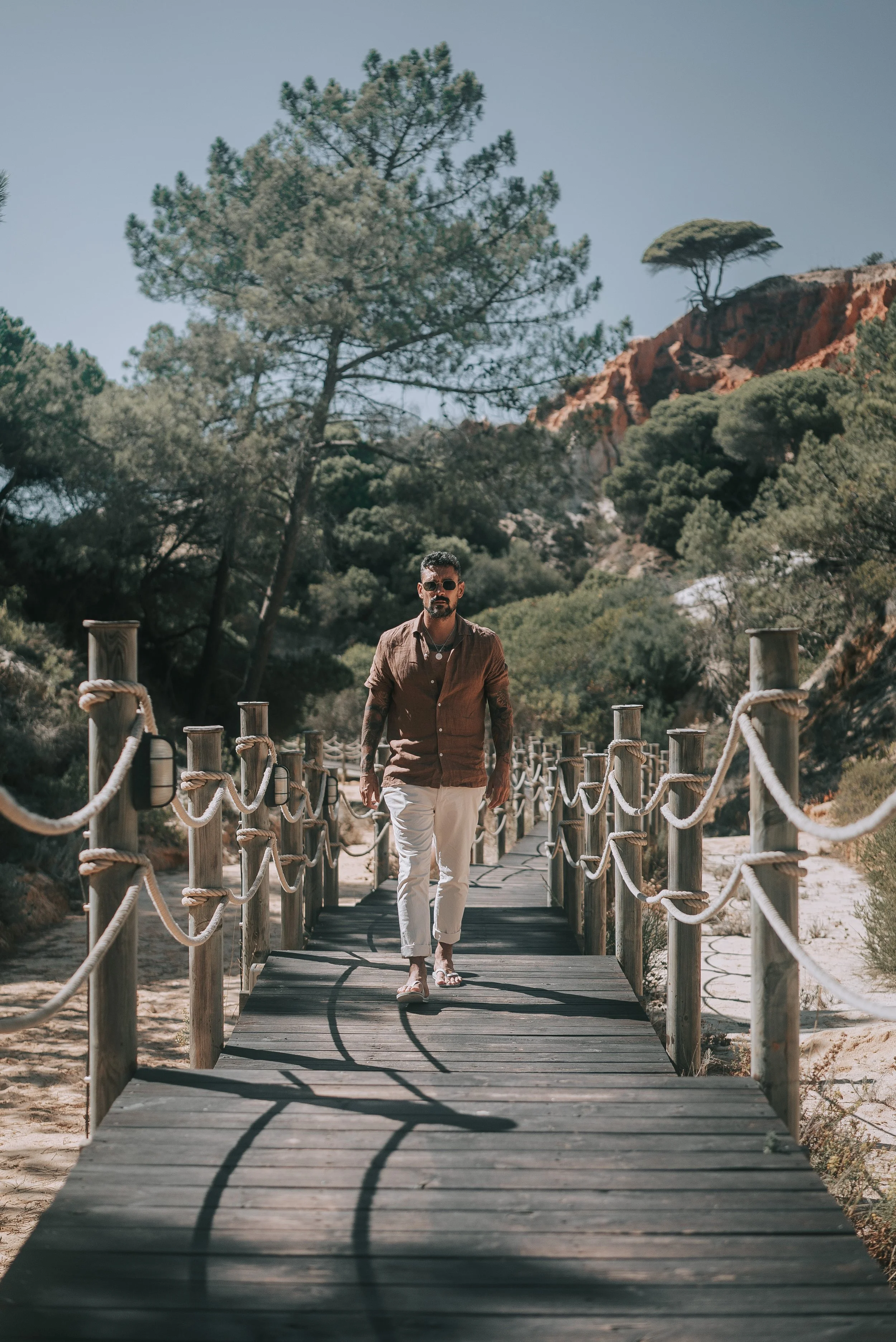Camp Okavango: Luxury Safari Review

Article by Guest Author Peter Brooker
We took a Cessna Caravan from Botswana to the Okavango Delta. The only real way to get around the delta is by Cessna. There are very few trails, not even roads, but trails. The young pilot arcs around to the passengers and warns, 'It will be a bumpy ride. There are sick bags in the seat pouch in front, please use them and take them with you when you leave.'
Over the delta the plane shook and weaved. The scorched ground below showed no signs of civilization and only a patchwork of shade from several clouds above gave it any kind of distinction. The lack of infrastructure leaves the terrains unmolested. Several hollowed pools have been completely swallowed by drought and now look like blisters that pot marked the delta plains.
Impalas skipped along the strip alongside the Okavango Camp. It wasn’t an airport it wasn’t a runway; it was a strip.
We were greeted by Taps, our guide for the 3-day stay.
'Over the next few days, you will see Green Backed Herons, Black Billed Egrets, Saddle Billed Storks, Pied Kingfisher, Malachite Kingfisher - the gem of the Okavango. You'll see lots of Squacco Heron, hopefully crocodile, hopefully lions, most definitely elephants, most definitely hippos, and if we have any luck, the lilac breasted roller.'
'What's the biggest croc you've seen on the Okavango Delta?' I asked.
We have a crocodile called Big Daddy. Five metres long. Although I've not seen him all summer. Possibly could have died or swam further upstream. But we don’t think so, there is enough food upstream so there's no reason to move."
"Big Daddy ever attack the humans?" I pressed.
"When we were young, our parents would make up horror stories to scare us away from the river. Stories such as, when you see vegetation floating with the current, that’s a crocodile underneath. They are using it to sneak up on their prey. But Big Daddy never attacked anyone." Taps paused and continued, "I once knew a girl who got attacked by another crocodile. Her mum jumped into the water to rescue her; they both lost an arm to the crocodile."
In the morning Taps took across the plains. His Winchester rifle over his shoulder with three ‘stopper’ bullets in the barrel, but not one in the chamber. He also has four more around his belt. No guide has ever had to use their rifle on the tours thus far.
Every year the guides must pass a weapons test.
In the distance we caught a tower of giraffe and a couple of skittish warthogs. Various herds of impala and elephant bones were strewn beneath the sausage fruit trees, bleached white by the son. It was a day of minimal adventure and dare I say anticlimactic. Before we got back on the boat we passed a mountain of Hippo dung.
"Do animals ever eat dung?" I asked Taps.
"Yes, Ostrich eats Elephant dung. Nothing eats Lion shit. Hyena shit can be eaten by elephants because there are minerals in it. But Lion shit is left to nature."
Around one of the river bends we saw a male elephant fully immerse himself into the river to cool himself. Elephants communicate through infrasound so low we can’t hear so they never get lost in the marsh. Close up they rumble to each other through their voice box. Though a small opening on the riverbank we spotted a Sitatunga aka the Marsh Antelope. A very rare animal, which animated Taps considerably. The Sitatunga is an aquatic antelope, and because of the amount of the time they spend in the marsh they are impossible to track hence the population is not known.
Back at the lodge Fruit Bats hung from the thatch looking in like goggle-eyed spies through the library window.
Founder of this eponymous blog, focusing on men's fashion & lifestyle.











